-
 Bitcoin
Bitcoin $83,205.0203
-2.55% -
 Ethereum
Ethereum $1,575.2742
-4.49% -
 Tether USDt
Tether USDt $0.9998
0.00% -
 XRP
XRP $2.0969
-2.59% -
 BNB
BNB $581.6935
-2.75% -
 Solana
Solana $126.0494
-4.63% -
 USDC
USDC $0.9998
-0.02% -
 Dogecoin
Dogecoin $0.1618
-3.59% -
 TRON
TRON $0.2525
2.34% -
 Cardano
Cardano $0.6343
-3.56% -
 UNUS SED LEO
UNUS SED LEO $9.2941
-0.24% -
 Chainlink
Chainlink $12.5011
-5.43% -
 Avalanche
Avalanche $19.3931
-5.63% -
 Stellar
Stellar $0.2362
-4.04% -
 Sui
Sui $2.2141
-5.83% -
 Toncoin
Toncoin $2.8584
-6.05% -
 Shiba Inu
Shiba Inu $0.0...01200
-4.50% -
 Hedera
Hedera $0.1645
-5.67% -
 Bitcoin Cash
Bitcoin Cash $341.0078
-1.31% -
 Litecoin
Litecoin $76.9728
-2.09% -
 Polkadot
Polkadot $3.6574
-1.60% -
 Dai
Dai $1.0000
-0.02% -
 Bitget Token
Bitget Token $4.2769
-3.16% -
 Hyperliquid
Hyperliquid $15.0799
-9.33% -
 Ethena USDe
Ethena USDe $0.9989
-0.02% -
 Pi
Pi $0.7202
-3.36% -
 Monero
Monero $202.6034
-1.88% -
 Uniswap
Uniswap $5.2907
-4.31% -
 OKB
OKB $52.9004
-1.67% -
 Pepe
Pepe $0.0...07189
-3.56%
How to design the consensus mechanism of blockchain game development?
The consensus mechanism in blockchain games must balance security, scalability, and fairness to handle high transaction volumes and ensure a seamless gaming experience.
Apr 13, 2025 at 01:49 am
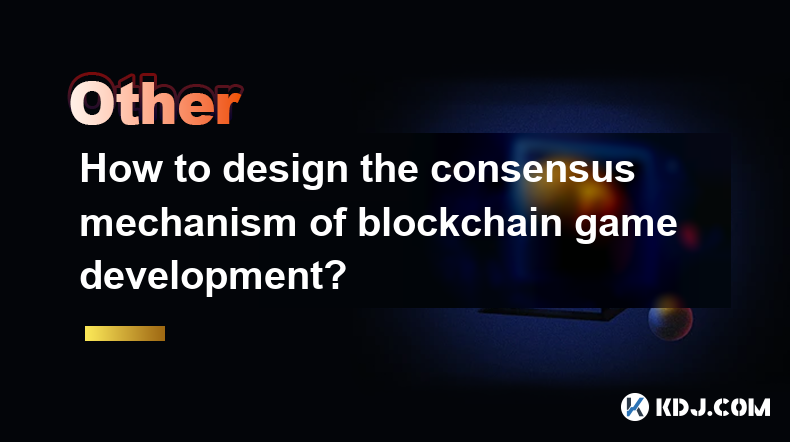
Designing the consensus mechanism for blockchain game development is a critical task that directly impacts the game's security, scalability, and overall user experience. The consensus mechanism is the protocol that ensures all participants in the blockchain network agree on the current state of the distributed ledger. In the context of blockchain games, the consensus mechanism must be tailored to handle high transaction volumes, ensure fairness, and maintain a seamless gaming experience.
Understanding Consensus Mechanisms in Blockchain Games
A consensus mechanism is a fundamental component of any blockchain system, including those used in gaming. It is the method by which nodes in the network reach an agreement about the state of the blockchain. In blockchain games, this mechanism must be efficient enough to handle the rapid pace of in-game transactions while maintaining the integrity of the game's state.
For example, Proof of Work (PoW) and Proof of Stake (PoS) are two well-known consensus mechanisms. PoW, used by Bitcoin, requires computational power to solve complex mathematical problems, which can be resource-intensive and slow. In contrast, PoS, used by Ethereum 2.0, relies on validators who are chosen to create new blocks based on the number of coins they hold and are willing to "stake" as collateral.
Choosing the Right Consensus Mechanism for Your Game
Selecting the appropriate consensus mechanism for a blockchain game involves considering several factors, including the game's architecture, the expected transaction volume, and the desired level of decentralization.
- Scalability: Games often require processing a high number of transactions per second. Mechanisms like Delegated Proof of Stake (DPoS) and Leased Proof of Stake (LPoS) can offer better scalability compared to traditional PoW.
- Security: The chosen mechanism must protect against common attacks such as double-spending and 51% attacks. Byzantine Fault Tolerance (BFT)-based mechanisms, such as Practical Byzantine Fault Tolerance (PBFT), can provide robust security.
- Energy Efficiency: With growing concerns about the environmental impact of blockchain technologies, mechanisms like PoS and Proof of Authority (PoA) are more energy-efficient than PoW.
- Fairness: In gaming, ensuring that all players have an equal chance to participate and benefit from the consensus process is crucial. Mechanisms like Proof of Activity (PoA) combine elements of PoW and PoS to balance fairness and efficiency.
Implementing the Consensus Mechanism
Once the suitable consensus mechanism is chosen, the next step is to implement it within the game's blockchain framework. This involves several technical steps:
- Setting Up the Network: Establish a network of nodes that will participate in the consensus process. For games, this could mean setting up dedicated servers or utilizing existing blockchain networks.
- Developing the Protocol: Write the code that defines how nodes will communicate, validate transactions, and agree on the blockchain's state. This includes implementing the chosen consensus algorithm and any necessary smart contracts.
- Testing: Rigorously test the consensus mechanism to ensure it can handle the expected transaction load and maintain the game's integrity. This might involve stress testing, security audits, and simulations.
- Integration: Integrate the consensus mechanism into the game's backend, ensuring that it interacts seamlessly with the game's logic and user interface.
Ensuring Fairness in Game Mechanics
Fairness is a paramount concern in blockchain games, as it directly affects player trust and engagement. The consensus mechanism should be designed to prevent any single entity from controlling the game's outcome.
- Randomness: Incorporate cryptographic randomness to ensure that game outcomes are unpredictable and fair. This can be achieved through techniques like Verifiable Random Functions (VRFs).
- Decentralization: Ensure that the consensus mechanism is sufficiently decentralized to prevent any single player or group from dominating the network. This might involve setting limits on the number of nodes a single entity can control.
- Transparency: Make the consensus process transparent so that players can verify the integrity of the game's state. This could involve publishing block data and transaction details on a public ledger.
Handling High Transaction Volumes
Blockchain games often generate a high volume of transactions, which can strain the consensus mechanism. To address this, developers can employ several strategies:
- Layer 2 Solutions: Implement layer 2 scaling solutions like sidechains or state channels to offload some of the transaction processing from the main blockchain.
- Batching: Group multiple transactions into a single block to reduce the overhead of individual transaction processing.
- Optimized Consensus Algorithms: Use consensus algorithms optimized for speed and efficiency, such as Directed Acyclic Graphs (DAGs) or Hashgraph, which can process transactions in parallel.
Case Studies of Consensus Mechanisms in Blockchain Games
Examining existing blockchain games can provide valuable insights into how different consensus mechanisms are implemented and their impact on the gaming experience.
- Decentraland: This virtual reality platform uses the Ethereum blockchain with a PoS consensus mechanism. The game's transactions are processed through Ethereum's network, which provides a high level of security and decentralization but can sometimes result in slower transaction times.
- Axie Infinity: Built on the Ronin sidechain, Axie Infinity uses a PoA consensus mechanism. This allows for faster transaction processing and lower fees, making it more suitable for a game with high transaction volumes.
Customizing Consensus Mechanisms for Specific Game Needs
Sometimes, a game may require a customized consensus mechanism to meet its unique needs. This could involve combining elements from different existing mechanisms or developing a new one from scratch.
- Hybrid Mechanisms: Combine PoW and PoS to leverage the security of PoW and the energy efficiency of PoS. This can be seen in Proof of Activity (PoA).
- Game-Specific Rules: Incorporate game-specific rules into the consensus mechanism, such as rewarding players for participating in the consensus process or penalizing them for malicious behavior.
Frequently Asked Questions
Q: Can a blockchain game use multiple consensus mechanisms simultaneously?
A: Yes, a blockchain game can use multiple consensus mechanisms simultaneously, often referred to as a hybrid approach. This can be beneficial for combining the strengths of different mechanisms, such as the security of PoW and the scalability of PoS. However, implementing such a system requires careful design to ensure compatibility and efficiency.
Q: How does the choice of consensus mechanism affect the cost of playing a blockchain game?
A: The choice of consensus mechanism can significantly impact the cost of playing a blockchain game. For instance, PoW mechanisms like those used by Bitcoin can lead to higher transaction fees due to the computational resources required. In contrast, PoS or PoA mechanisms typically have lower fees, making the game more accessible to a broader audience.
Q: What are the potential risks of using a less decentralized consensus mechanism in a blockchain game?
A: Using a less decentralized consensus mechanism, such as PoA, can introduce risks such as centralization of control, where a few nodes or validators can influence the game's state. This can lead to issues like censorship, where certain transactions or game actions are blocked, or manipulation of game outcomes, which can undermine player trust and fairness.
Q: How can players verify the fairness of the consensus mechanism in a blockchain game?
A: Players can verify the fairness of a consensus mechanism by examining the blockchain's public ledger, which should transparently record all transactions and blocks. Additionally, many blockchain games provide tools or APIs that allow players to audit the consensus process, ensuring that the game's state is determined fairly and without manipulation.
Disclaimer:info@kdj.com
The information provided is not trading advice. kdj.com does not assume any responsibility for any investments made based on the information provided in this article. Cryptocurrencies are highly volatile and it is highly recommended that you invest with caution after thorough research!
If you believe that the content used on this website infringes your copyright, please contact us immediately (info@kdj.com) and we will delete it promptly.
- The best cryptos to invest in right now are not what you might expect.
- 2025-04-14 05:25:12
- Today, a token from the decentralized exchange (DEX) ORCA on the Solana blockchain has surged more than 60% in value
- 2025-04-14 05:25:12
- Onyxcoin ($XCN) is Fast Becoming One of the Most Discussed Altcoins in the Cryptocurrency Market.
- 2025-04-14 05:20:12
- The memecoin market still drew interest from clever investors, judging by on-chain data
- 2025-04-14 05:20:12
- The cryptocurrency sector has demonstrated a degree of resilience over recent days, during which both Bitcoin and Ethereum have notched what might be taken as significant support levels.
- 2025-04-14 05:15:13
- $POPCAT is the New Memecoin King. Will This Trader Find Redemption?
- 2025-04-14 05:15:13
Related knowledge
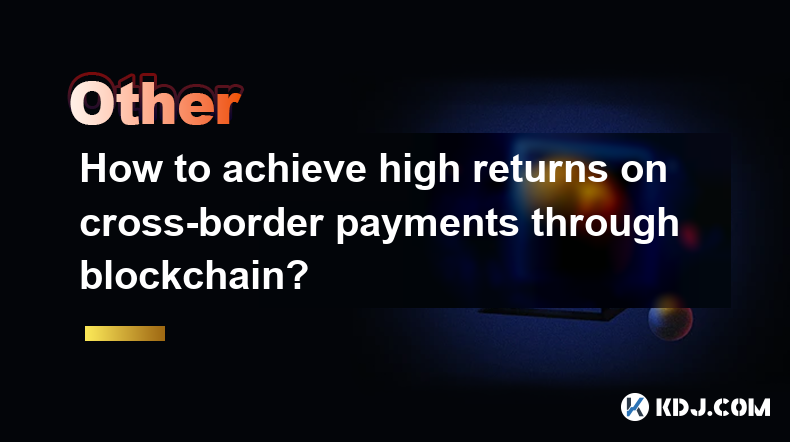
How to achieve high returns on cross-border payments through blockchain?
Apr 12,2025 at 05:57pm
How to Achieve High Returns on Cross-Border Payments Through Blockchain? Cross-border payments have traditionally been plagued by high fees, slow processing times, and a lack of transparency. However, the advent of blockchain technology offers a promising solution to these issues, potentially allowing for high returns on such transactions. Blockchain te...
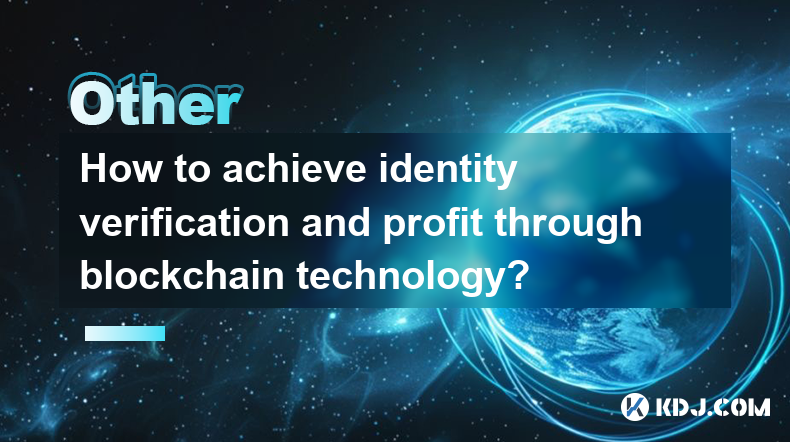
How to achieve identity verification and profit through blockchain technology?
Apr 12,2025 at 10:35pm
Achieving identity verification and profit through blockchain technology involves understanding the underlying principles of blockchain, exploring specific applications that facilitate identity verification, and leveraging these technologies to generate profit. This article will delve into these aspects, providing a comprehensive guide on how to navigat...
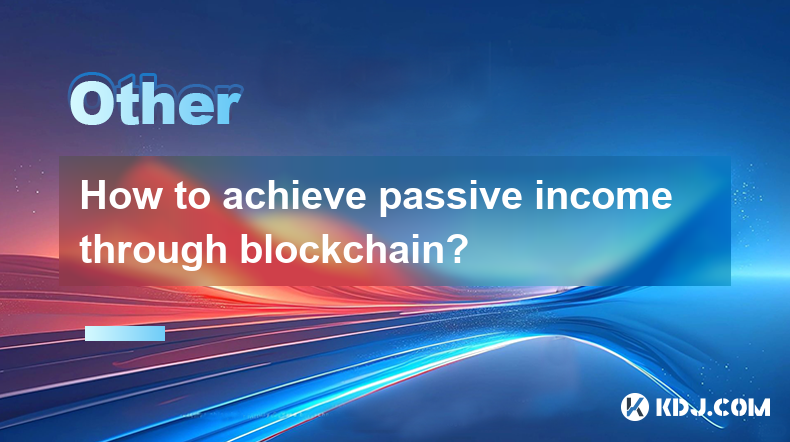
How to achieve passive income through blockchain?
Apr 13,2025 at 09:00pm
Achieving passive income through blockchain technology has become an increasingly popular strategy among cryptocurrency enthusiasts and investors. Blockchain technology offers a decentralized platform that can be utilized to generate income with minimal ongoing effort. This article will explore various methods through which you can achieve passive incom...

How to achieve true ownership of virtual assets in blockchain games?
Apr 13,2025 at 03:35pm
Achieving true ownership of virtual assets in blockchain games is a topic that has garnered significant attention within the cryptocurrency community. The promise of blockchain technology lies in its ability to provide verifiable ownership and control over digital assets, which is particularly appealing in the gaming sector where players seek to own, tr...
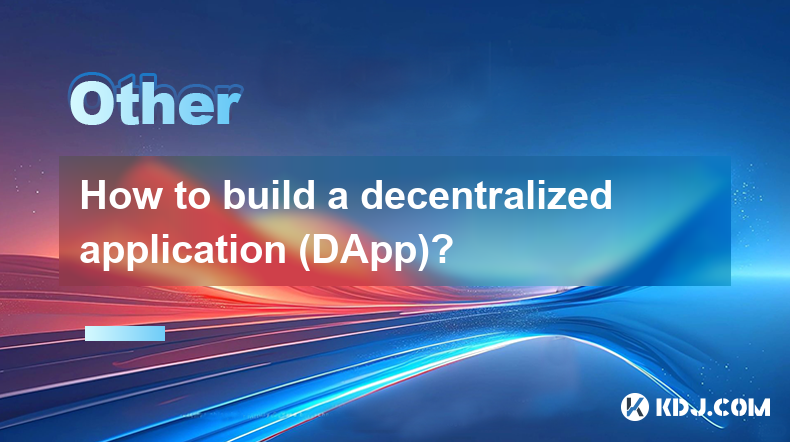
How to build a decentralized application (DApp)?
Apr 14,2025 at 01:01am
Building a decentralized application (DApp) involves several key steps and considerations that are crucial for ensuring the application's functionality, security, and decentralization. This guide will walk you through the process of creating a DApp, from conceptualization to deployment. Understanding the Basics of DAppsBefore diving into the development...
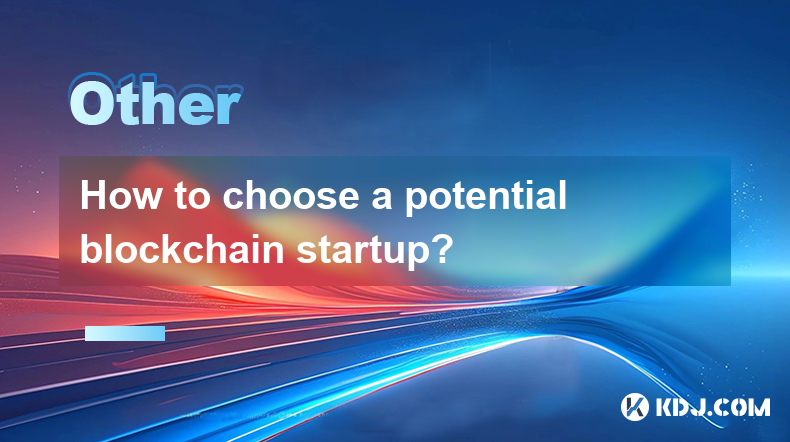
How to choose a potential blockchain startup?
Apr 13,2025 at 06:29pm
Choosing a potential blockchain startup involves a thorough evaluation of several key factors to ensure that your investment or partnership is well-founded. This article will guide you through the process of selecting a promising blockchain startup by examining crucial aspects such as the team's expertise, the project's technology, market potential, and...

How to achieve high returns on cross-border payments through blockchain?
Apr 12,2025 at 05:57pm
How to Achieve High Returns on Cross-Border Payments Through Blockchain? Cross-border payments have traditionally been plagued by high fees, slow processing times, and a lack of transparency. However, the advent of blockchain technology offers a promising solution to these issues, potentially allowing for high returns on such transactions. Blockchain te...

How to achieve identity verification and profit through blockchain technology?
Apr 12,2025 at 10:35pm
Achieving identity verification and profit through blockchain technology involves understanding the underlying principles of blockchain, exploring specific applications that facilitate identity verification, and leveraging these technologies to generate profit. This article will delve into these aspects, providing a comprehensive guide on how to navigat...

How to achieve passive income through blockchain?
Apr 13,2025 at 09:00pm
Achieving passive income through blockchain technology has become an increasingly popular strategy among cryptocurrency enthusiasts and investors. Blockchain technology offers a decentralized platform that can be utilized to generate income with minimal ongoing effort. This article will explore various methods through which you can achieve passive incom...

How to achieve true ownership of virtual assets in blockchain games?
Apr 13,2025 at 03:35pm
Achieving true ownership of virtual assets in blockchain games is a topic that has garnered significant attention within the cryptocurrency community. The promise of blockchain technology lies in its ability to provide verifiable ownership and control over digital assets, which is particularly appealing in the gaming sector where players seek to own, tr...

How to build a decentralized application (DApp)?
Apr 14,2025 at 01:01am
Building a decentralized application (DApp) involves several key steps and considerations that are crucial for ensuring the application's functionality, security, and decentralization. This guide will walk you through the process of creating a DApp, from conceptualization to deployment. Understanding the Basics of DAppsBefore diving into the development...

How to choose a potential blockchain startup?
Apr 13,2025 at 06:29pm
Choosing a potential blockchain startup involves a thorough evaluation of several key factors to ensure that your investment or partnership is well-founded. This article will guide you through the process of selecting a promising blockchain startup by examining crucial aspects such as the team's expertise, the project's technology, market potential, and...
See all articles























































































